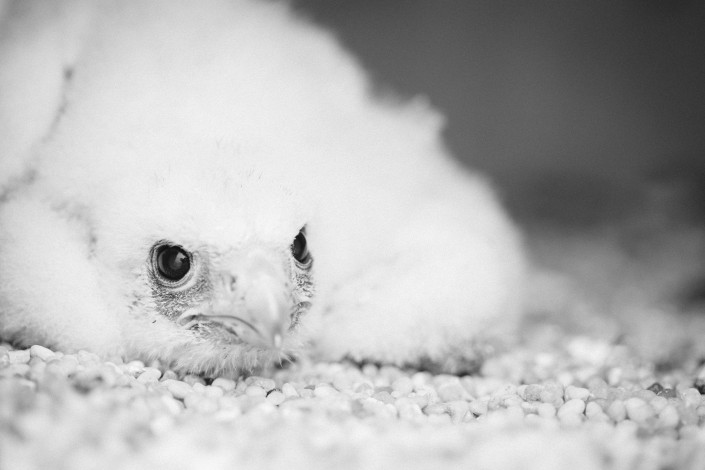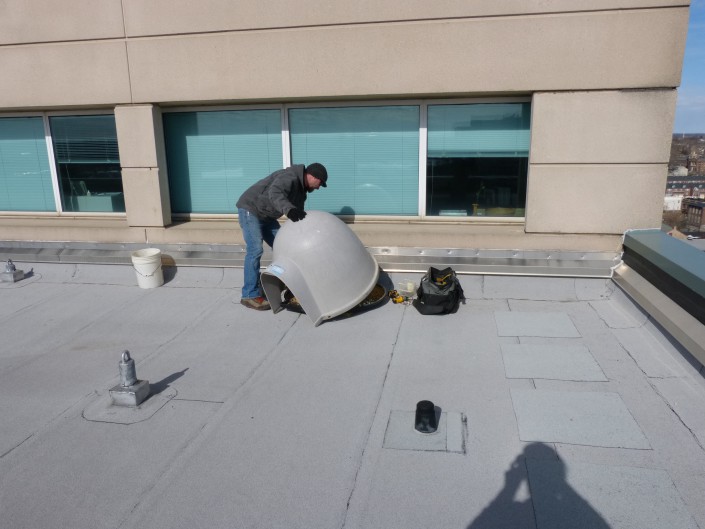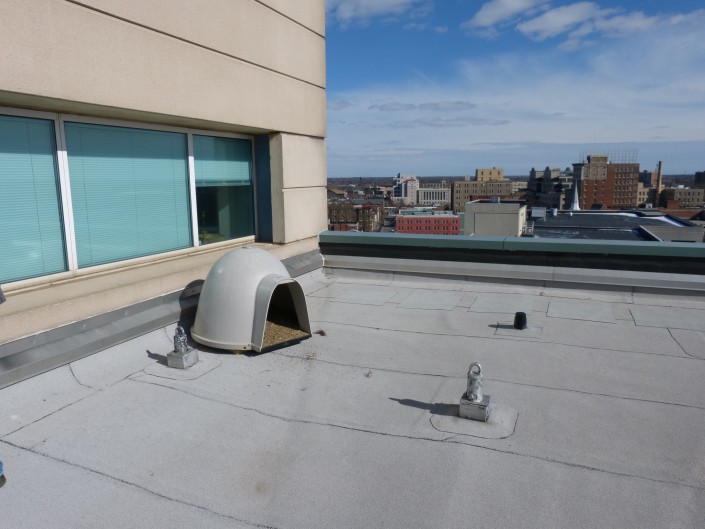Jersey City Falcon ruffles some Canadian feathers!
79/AN or “Ivy” thriving in Toronto
by Ben Wurst, Habitat Program Manager

I’ll never forget banding this particular eyas. Here’s a flashback entry of Nestbox News after the banding:
“The banding day when as smooth as it could. I found I would be all alone with banding there the evening before (Kathy was too engulfed in budgeting to join me). So, for the first time I would be banding at JC (Jersey City) all alone. I have banded young falcons before, so I wasn’t worried. If you know me, I like a good challenge! Six guests joined me to watch at 101 Hudson St. and our Executive Director, David Wheeler would be joining us to help. However, things changed rapidly.. Shortly after arriving I got a call from David that he had vehicles issues while only 1 mile away! He was stuck and could not abandon his car, which was a rental…bummer! I was all on my own now. For safety reasons, I was the only person allowed on the roof to grab the eyas. Easy, right? I thought so… I had all my gear: helmet, umbrella, gloves, box. Check. I headed out onto the roof to grab the eyas. As soon as I opened the door the adult female came diving down from the upper parapet to drive me off. We use an umbrella to ward her off. Since Kathy had the usual umbrella, I brought my wife’s. When I had to grab the eyas I needed two hands, so with no helper (to hold the umbrella) I sat it down on the edge of the nestbox and on my helmet. I quickly load the eyas in the box. I hear the female swoop down towards my head. The umbrella is gone! She took my wife’s umbrella and flew off with it! I bring the eyas inside, examined her (determined its a female) and band her legs for future tracking. All in all, everything went well considering the circumstances. I never found the umbrella…” —Fast forward to this past March… I got the umbrella back!! Building engineers at 101 Hudson St. found my wife’s umbrella on a ledge of the building.

After an uneventful season for all of us Falcon Cam viewers this year we need some positive news… Well, last week 79/AN or “Ivy” was re-captured at a banding station outside of Toronto, Canada. She has also caused quite a news storm up there! After she was captured Tracy Simpson, Raptor Centre and Education Coordinator with the Canadian Peregrine Foundation started to piece together the puzzle…
“We were talking about her last night and thinking, “Oh yeah, remember that sub (adult) that showed up at that one nest a few times… …and don’t forget that other incident downtown. Could that have been Ivy?” So she is suspect number one in several incursion incidents around the southern province all along the lakeshore area.” said Tracy. Apparently Ivy is working her way into the local peregrine falcon scene, which looks to be pretty active up there.

Ivy was caught in a mist net at a hawk watch/banding station, called the Tommy Thompson Park Bird Research Station. She was described as a “cracking female Peregrine falcon” who was already banded. They assumed she was a Toronto hatched falcon but after being caught they reported the bands to USGS and found out that she’s a Jersey City girl! Here’s a link to their post on Facebook with more photos.
Tracy informed me that they have some volunteers who are watching her interaction with the local resident pairs. She also said that Ivy “stands a real chance at finding a home here in Toronto.” We’re happy to know that 79/AN is alive and well in Canada. Hopefully we’ll get some more news on her in the future, all because she was banded!
Learn more:
- Conserve Wildlife Foundation’s Peregrine Project
- Conserve Wildlife Foundation’s FalconCam
- Conserve Wildlife Foundation’s Online Field Guide: Peregrine Falcons
Ben Wurst is the Habitat Program Manager for Conserve Wildlife Foundation of New Jersey.























